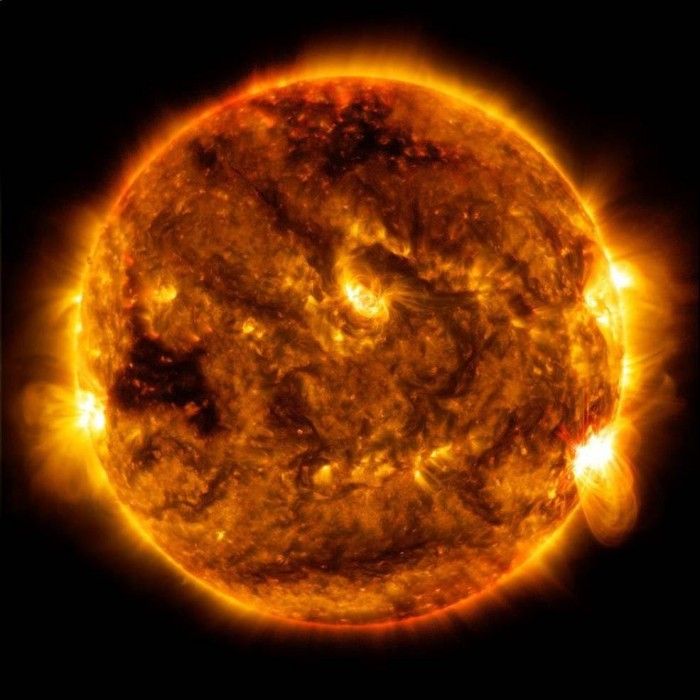NASA has selected two science missions — the Multi-Slit Solar Probe (MUSE) and Helio Swarm — to help improve our understanding of the sun's dynamics, the sun's connection to Earth, and the changing space environment. These missions will provide deeper insights into our universe and provide critical information to help protect astronauts, satellites, and communications signals such as GPS.

"MUSE and HelioSwarm will provide new and deeper insights into the solar atmosphere and space weather," said Thomas Zurbuchen, deputy director of science at NASA headquarters in Washington, "These missions not only expand the scientific content of our other heliophysical missions — they also provide a unique perspective and novel approach to understanding the mysteries of our star." ”
MUSE
The MUSE mission will help scientists understand the forces that drive the sun's corona heating and the eruptions in this outermost region that underlie space weather. The mission will gain a deeper understanding of the physics of the sun's atmosphere by using a powerful instrument called a multi-gap spectrometer to observe the sun's extreme ultraviolet radiation and obtain the highest resolution images of the sun's transition zone and corona taken to date.
The mission will also provide additional observations from heliophysical research, such as the Extreme Ultraviolet Spectroscopy Telescope and ground-based observatories.
Nicola Fox, director of the Solar Physics Division at NASA Headquarters, said: "MUSE will help us fill critical knowledge gaps related to the japan-earth connection. It will provide more insight into space weather and complement a range of other missions within the heliophysical mission team. ”
The main objective of the MUSE mission is to study the causes of coronal heating and instability such as flares and coronal mass ejection, and to gain insight into the basic plasma properties of the corona. MUSE will obtain high-resolution images of the evolution of solar flares in a field of view focused on a large area of activity on the Sun.
The main investigator of the MUSE mission is Bart DePontieu of the Lockheed-Martin Center for Advanced Technology (LMATC) in Palo Alto, California. The budget for this task is $192 million. LMATC will provide project management.
HelioSwarm
The Helio Swarm mission, a constellation or "swarm of bees" made up of nine spacecraft, will be the first to make multiscale spatial measurements of magnetic field fluctuations and the movement of the solar wind known as solar wind turbulence. The sun's outermost atmosphere, the heliosphere, covers a vast region of the solar system. The solar wind travels through the heliosphere, and their interaction with the planetary magnetosphere and destructive activities such as coronal mass ejection affect their turbulence.
Studying large areas of solar wind turbulence requires simultaneous plasma measurements from different points in space. Helio Swarm consists of a central spacecraft and eight small satellites in common orbit that have a certain distance between each other and between the central spacecraft. The center spacecraft will maintain radio contact with each small satellite. All radio links between the constellation and Earth will be made through hub spacecraft and nasa spacecraft communication antennas of NASA's deep space network.
Peg Luce, deputy director of the Department of Solar Physics, said: "Technological innovations in HelioSwarm's small satellites operating together as a constellation provide a unique ability to study turbulence in the solar wind and its evolution. ”
The main investigator for the Helio Swarm mission was Harlan Spence from the University of New Hampshire. The budget for the mission is $250 million. NASA's Ames Research Center in Silicon Valley, California, will provide project management.
Funding and management oversight of these missions is provided by the Heliophysics Explorers program, which is managed by the Explorer Program Office at NASA's Goddard Space Flight Center in Greenbelt, Maryland.